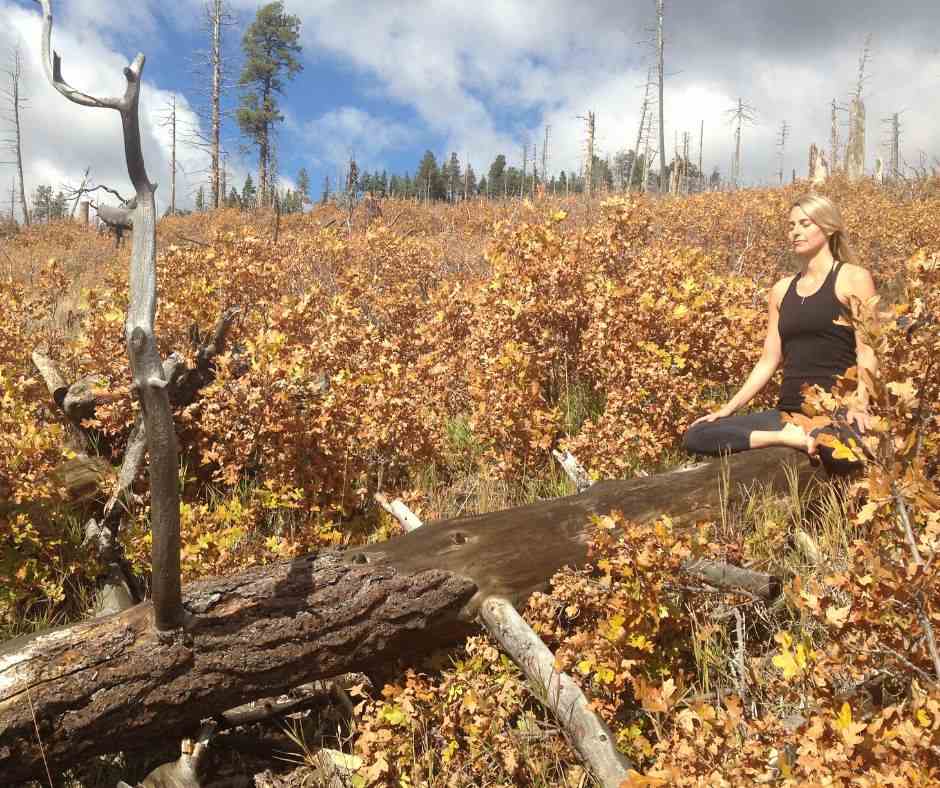There are many postures available for the practice of meditation. Meditation can ultimately help you let go of unwanted tension and gripping, but in order to experience this deep state of calm it first requires you to release the habitual (and often unnoticed) tendency to have an agenda during practice. This means letting go of what you perceive to be the “best” and most “yogic” posture and actually finding something that works for your body.
The most important key when preparing your posture to meditate is that you find a place of relative ease with the spine straight. This will allow you to be relaxed yet alert and help keep your energy channels open and flowing. You may also want to use a shawl or light blanket to stay warm and relatively comfortable.
Traditionally the Buddha taught four basic postures for meditation; sitting, lying, standing and walking. Let’s explore each of these variations, and appropriate modifications, in more detail.
I encourage you to explore these postures to find a place where you can meditate without pain.
Postures for Meditation
Sitting:
Easy Pose: This is the classic posture you often see when meditation is described. It can be a very supportive posture as it keeps the attention brighter than some of the other postures, but also allows the body to relax around the stacking of the spine.
Ensure your hips are higher than your knees and there is a slight forward tilt in the pelvis. If your knees are higher, or they’re floating in the air, use a cushion or block to sit up. You can cross the ankles or place one ankle in front of the other. Use padding under the knees or ankles if pressure on the joints is uncomfortable.
As you settle, rest the palms of your hands down on your legs or in your lap (in mindfulness meditation there are no hand mudras or gestures). Soften your shoulders and feel the natural lengthening of your spine and neck. If you experience neck, shoulder, or upper back pain place cushions or blocks under your arms and/or hands for support. You can also experiment with the placement of your head over your body as you may have developed incorrect posture that now feels aligned but in actuality is creating imbalance. Close your eyes or keep your eyes open with a soft gaze.
Kneeling: This seated pose can be practiced with a small bench, or sitting directly back on the heels. Remember to use enough height under your hips and/or between the legs so that your knees and hips are relatively comfortable. Meditation poses are not meant to be yoga poses! The purpose is to find a posture where you can stay fairly relaxed in order to turn the attention towards the inner practices of breath awareness and contemplation. Don’t stay in a posture that is eliciting strong or painful sensations in the joints, especially straight away.
Sit in a Chair: Sit away from the back of the chair with your spine long. Uncross your legs and place your feet on the floor. Your femur bones should be in a straight or a descending line to your knees. Use a cushion under your hips or feet if not aligned. Experiment with head and hand placement and the addition of props to ease discomfort.
Lying:
This pose can be used occasionally when particularly fatigued or for those who are sick and unable to take one of the other postures.
I believe most people need more sleep, but meditation is not the place to sleep. Meditation is for waking up! This posture should only be used for mindfulness meditation if you are able to remain alert.
You can use various blankets under your body and cushions under the knees to find comfort. Bend your knees bringing your feet wider than your hips and allow your knees to fall into one another if you have lower back pain or if lying flat causes discomfort. To stay alert you may want to bend your arms at the elbows and rest your upper arm bones on the ground with your palms floating in the air. If you start to fall asleep your arms will drop waking you up.
Standing and Walking:
Standing and walking are especially helpful if you experience a lot of fatigue, pain, or restlessness, in other postures.
Begin by standing comfortably with your feet hip distance apart bending your knees slightly and relaxing your weight towards the earth. You can practice standing meditation on its own or you can move from standing into walking meditation. As you begin walking find a pace that works for you. Aim to be present for every step. Experiment with feeling your whole body or zoom into one aspect of your experience. Remain soft and receptive.
I challenge you to set up a schedule of regular meditation moving forward. And tell me in the comments below — which posture do you use most often? Will you try one of these suggestions or variations next time?








